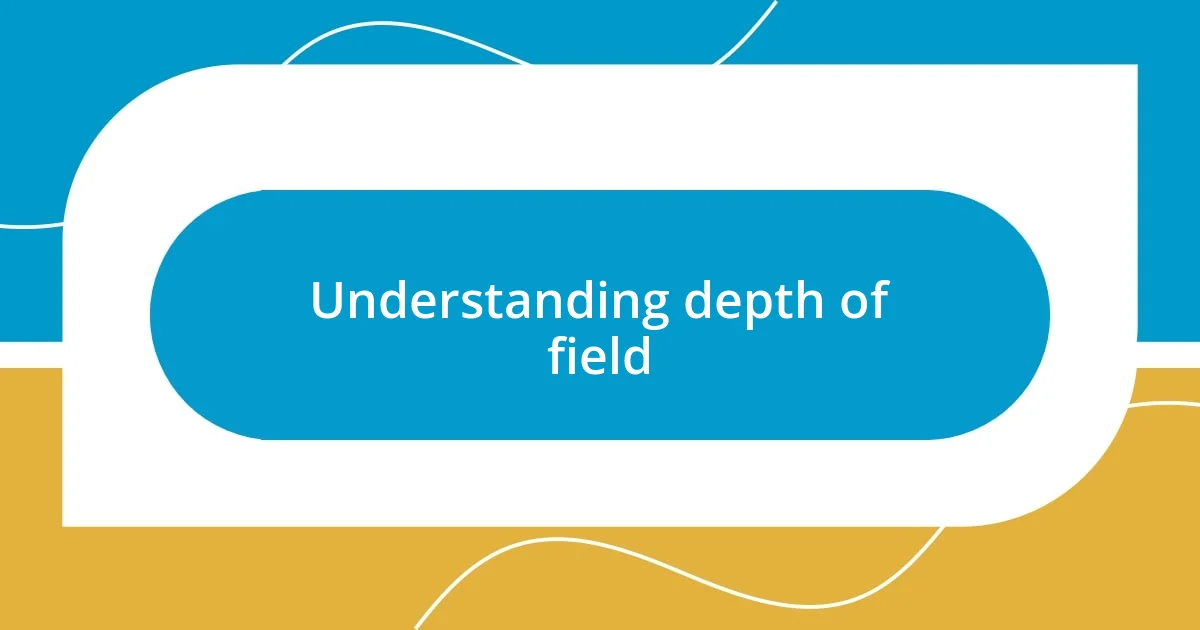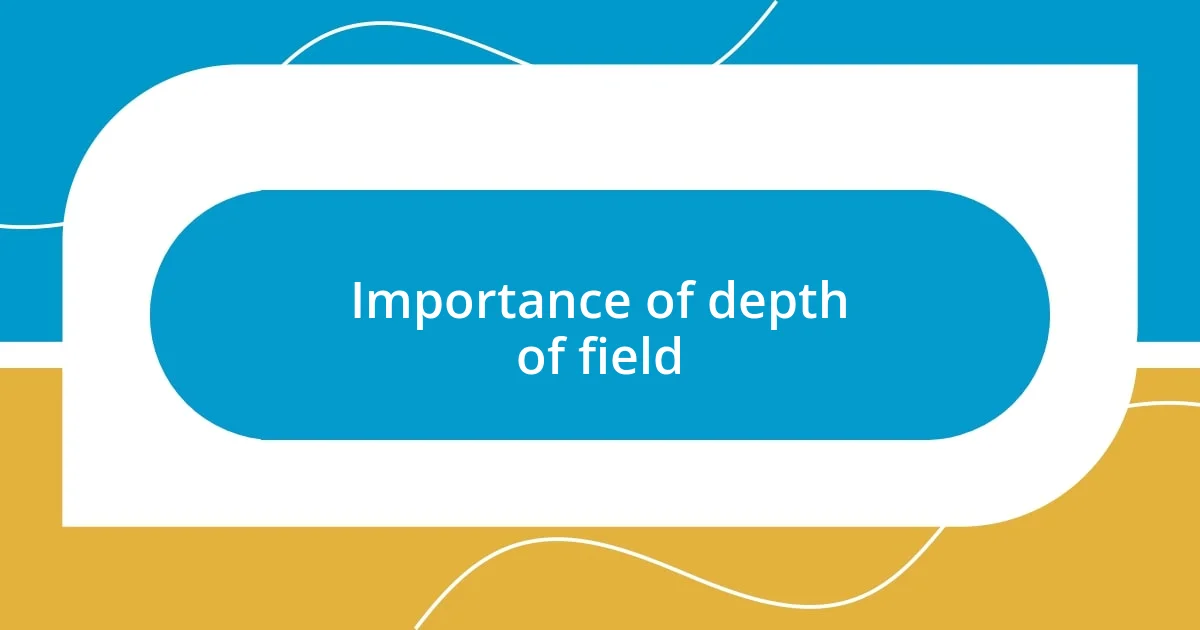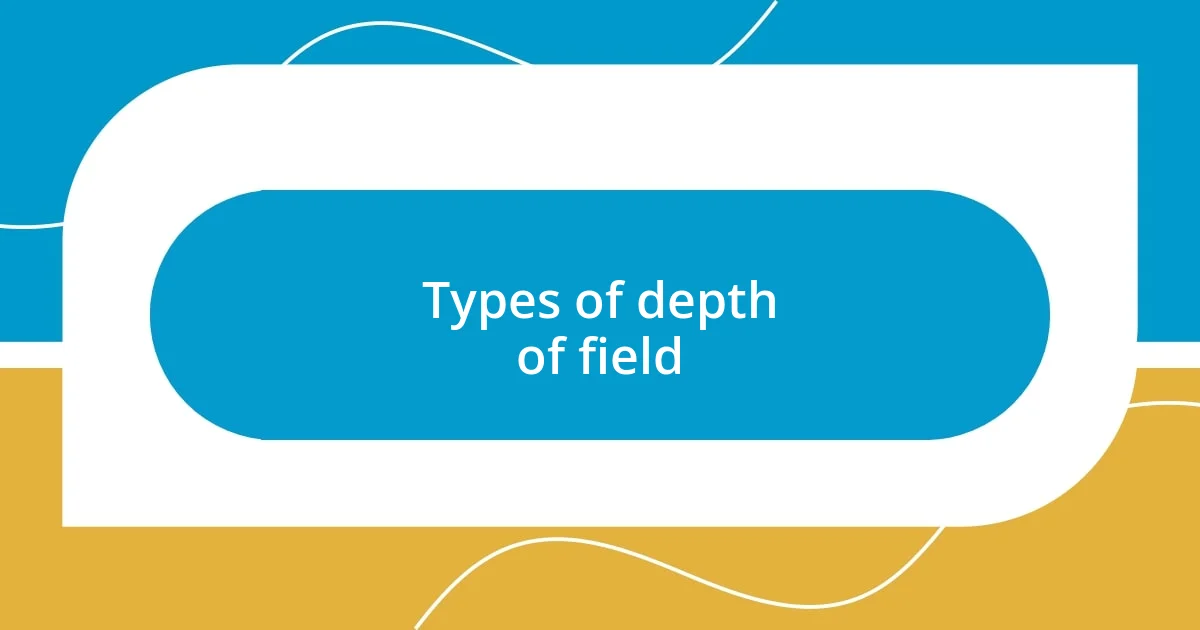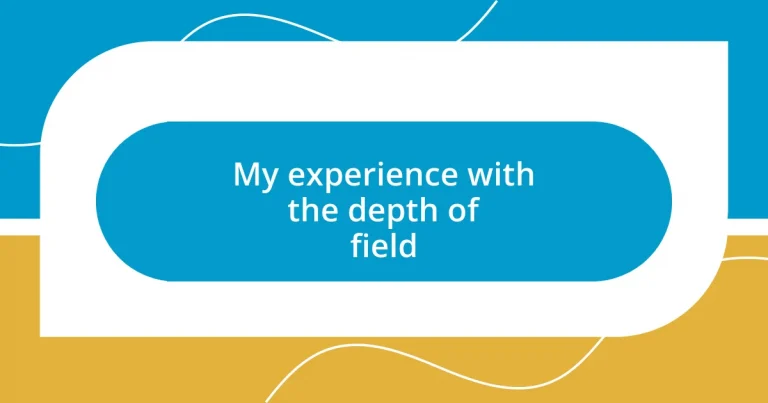Key takeaways:
- Depth of field (DoF) is essential for directing viewer attention and evoking emotions in photography, influenced by factors like aperture size and distance from the subject.
- Shallow depth of field (Narrow focus) is ideal for intimate portraits, while deep depth of field (Wide focus) excels in landscape photography, providing various narrative styles.
- Mastering different types of depth of field enhances storytelling capabilities, allowing photographers to create unique and memorable images that resonate with their experiences.

Understanding depth of field
Depth of field (DoF) might seem like a complex concept at first, but it fundamentally refers to the zone of acceptable sharpness within an image. I remember the first time I shot a portrait with a wide aperture—it felt like magic to see the background blur away, isolating my subject in this dreamy realm. It’s fascinating how this simple feature can drastically change the story conveyed in a photo.
As I experimented more, I realized that depth of field can be influenced by several factors, such as aperture size, distance from the subject, and focal length of the lens. Have you ever noticed how a shallow depth of field can evoke a feeling of intimacy? I learned this firsthand while photographing my daughter; the soft background truly made her laughter the focal point of the image, drawing viewers into that joyful moment.
It’s intriguing to think about how different depths of field can shape the narrative in a photograph. Whether you aim for a sweeping landscape with sharp details or a close-up with soft edges, understanding how to manipulate DoF can elevate your photography. I still find it exciting to play with settings, experimenting with how slight adjustments can lead to strikingly different interpretations of the same scene.

Importance of depth of field
Depth of field is vital for storytelling in photography. It allows you to direct the viewer’s attention exactly where you want it, creating emotional connections to your subject. For instance, during a recent trip to the mountains, I captured a breathtaking landscape, but it was the vibrant foreground flowers in sharp focus against a blurred backdrop that really brought the image to life. This depth created a sense of depth and dimension, inviting viewers to feel as if they were standing in that beautiful moment with me.
On another occasion, I decided to photograph a lively street festival. I aimed to convey the joyful chaos, so I used a medium depth of field. That decision made the crowd and the colorful stalls clear, while just enough background detail faded gently away. The resulting image brought back feelings of excitement and energy, making nearly everyone who saw it smile. Having that control over how sharp or soft parts of an image appear can lead to truly memorable photographs.
Ultimately, the importance of depth of field lies in its power to evoke emotions and tell stories. When you master this skill, you gain the ability to craft images that resonate deeply. I’ve found that choosing the right depth of field allows me to narrate my experiences in a way that’s both artistic and personal, making every shot a unique statement of my journey as a photographer.
| Shallow Depth of Field | Deep Depth of Field |
|---|---|
| Focus on one subject, creating intimacy. | Everything is in focus, showing the wider scene. |
| Great for portraits and close-up shots. | Ideal for landscapes and group photos. |
| Uses a wide aperture. | Typically uses a narrow aperture. |

Types of depth of field
When it comes to depth of field, I’ve often found myself gravitating towards shallow depth of field in my portraits. I initially tried this technique during a family gathering, capturing my grandmother’s warm smile against a beautifully blurred garden. The moment created such an emotional connection; I could really feel my love for her radiating through the photo. Isn’t it interesting how isolating your subject can draw out the essence of who they are?
On the flip side, deep depth of field has a charm of its own, especially in landscape photography. I remember standing at the edge of a stunning cliff, snapping a picture of the vast valley below. With a narrow aperture, every detail from the vibrant flowers in the foreground to the distant mountains stood sharp and clear. That image felt like a window into an incredible world, didn’t it? The depth made it feel like you could reach into the photograph and experience the scene firsthand.
Finally, medium depth of field has become a personal favorite for documenting events. One particular evening, while at a friend’s wedding, I chose to focus on the couple laughing joyfully while blurring the lively dance floor behind them just enough. That slight separation highlighted their happiness, making the moment resonate even more. How powerful is it to capture a fleeting moment, isn’t it? Each type of depth of field uniquely influences the narrative, allowing photographers like me to guide the viewer’s emotions while telling our stories beautifully.














